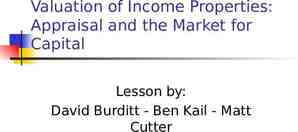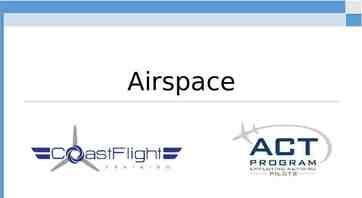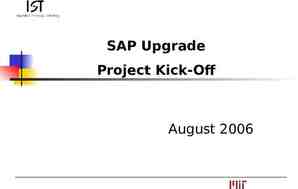Revenue Recognition UAA ACCT 650 Seminar in Executive Uses of
61 Slides632.00 KB
Revenue Recognition UAA ACCT 650 Seminar in Executive Uses of Accounting Dr. Fred Barbee
Consider a Manufacturing Firm . . . Marketing the product Manufacturing the product. Receiving customers’ order Delivering the product. Negotiating and signing production contracts. Collecting the cash from customers. Ordering materials
“The fundamental revenue recognition concept is that revenues should not be recognized by a company until realized or realizable and earned by the company.” Lynn E. Turner, Chief Accountant, SEC Speech by SEC Staff: Revenue Recognition May 31, 2001
Revenue Recognition At the Financial Accounting Standards Board (FASB)
In an effort to provide better and more comprehensive guidance as to when companies should record revenues, the FASB has added a project on revenue recognition to its agenda. www.fasb.org May 22, 2002
“Revenue usually is the largest item in financial statements, and revenue recognition issues top the list of reasons for financial reporting restatements.” L. Todd Johnson FASB Senior Project Manager www.fasb.org/news/nr052002.shtml
A top down approach focusing on conceptual guidance. A bottom up approach that provides an inventory of existing revenue recognition guidance and accepted practices.
“. . . Issues involving revenue recognition are among the most important – and the most difficult – that standard setters and accountants face.” www.fasb.org/project/revenue recognition.shtml
Conceptual Guidance Significant Gap FASB Concept Statements 5 and 6 Authoritative Literature APB, FASB, AICPA, EITF, SEC, SAB
Conceptual Guidance FASB Concept Statements 5 and 6 Authoritative Literature APB, FASB, AICPA, EITF, SEC, SAB
Revenue Revenues are inflows of assets and/or settlement of liabilities from delivering or producing goods, rendering services, or other activities that constitute the entity’s ongoing major or central operations. Statement of Financial Accounting Concepts No. 6 “Elements of Financial Statements” Paragraph 78
Revenue Essential Characteristics Inflows of assets or settlements of liabilities Result of some productive activity of the firm Major or central operation
Recognition The process of formally recording or incorporating an item into the financial statements of an entity as an asset, liability, revenue, expense, or the like. Statement of Financial Accounting Concepts No. 5 “Recognition & Measurement in Financial Statements of Business Enterprises” - Paragraph 6
Recognition Essential Characteristics Depiction in both words and numbers Included in financial statements and statement totals Disclosure by other means is not recognition Statement of Financial Accounting Concepts No. 5 “Recognition & Measurement in Financial Statements of Business Enterprises” - Paragraph 6
To be recognized . . . An item must meet the definition of an element It must be measurable It must be relevant It must be reliable
Principle of Revenue Recognition To recognize a revenue it must be: 1. Realized (or realizable) 2. Earned
Principle of Revenue Recognition Realized When cash or claims to cash are received. Realizable When assets received are readily convertible to known amounts of cash or claims to cash.
Realization Criterion The revenue – the amount the customers will pay – can be objectively measured. The eventual collection of cash (or cash-equivalents) can be reasonably assured. Any remaining fulfillment costs can be estimated with reasonable reliability and accuracy.
The Earned Criterion The company has completed a substantial portion of the production and sales effort. The risks of ownership have been shifted to the customer.
Whoa . . . Wait a Minute! This all sounds so incredibly easy! So . . . Why do we have so many problems with revenue recognition?
Timing of Revenue Recognition
The Timing of Revenue Recognition The point at which an order is obtained from a customer. The point at which an order is accepted and the terms of the sale are finalized.
The Timing of Revenue Recognition The point at which goods are delivered to a customer. The point at which the customer is billed The point at which payment is received from the customer.
Revenue Revenue Recognition Recognition Classified Classified by by Nature Nature of of Transaction Transaction Type Typeof ofTransaction Transaction Sale Saleof ofProduct Product From FromInventory Inventory Revenue Revenue Sales Sales Timing Timingof ofRecognition Recognition Date Dateof ofSale Sale (Date (Dateof ofDelivery) Delivery)
Revenue Revenue Recognition Recognition Classified Classified by by Nature Nature of of Transaction Transaction Type Typeof ofTransaction Transaction Rendering Renderingaa Service Service Revenue Revenue Fees Feesor orServices Services Timing Timingof ofRecognition Recognition Services ServicesPerformed Performed and andBillable Billable
Revenue Revenue Recognition Recognition Classified Classified by by Nature Nature of of Transaction Transaction Type Typeof ofTransaction Transaction Permitting Permittinguse use of ofan anAsset Asset Revenue Revenue Interest, Interest,Rent, Rent, and andRoyalties Royalties Timing Timingof ofRecognition Recognition As Astime timepasses passesor or assets assetsare areused used
Revenue Revenue Recognition Recognition Classified Classified by by Nature Nature of of Transaction Transaction Type Typeof ofTransaction Transaction Sale Saleof ofasset assetother other then theninventory inventory Revenue Revenue Gain Gainor orloss losson on disposition disposition Timing Timingof ofRecognition Recognition Date Dateof ofSale Sale or orTrade Tradein in
Figure 2.2 The Revenue Recognition Process: Industries Recognizing Revenue at Indicated Phases Revenues may also be recognized at other times besides the point of sale.
Revenue Recognition At the Securities and Exchange Commission (SEC)
The SEC & Revenue Recognition SABs do not represent rules or interpretations of the Commission but rather represent the interpretations and practices followed by the Division of Corporation Finance and the Office of the Chief Accountant in administering the disclosure requirements of the Federal securities laws. SEC Staff Accounting Bulletin No. 101 - FAQs http://www.sec.gov/info/accountants/sab101faq.htm
The SEC & Revenue Recognition SAB 101 . . . Reflects the basic principles of revenue recognition in existing GAAP. Does not supersede any existing authoritative literature. Summarizes in one location the existing guidance on revenue recognition. SEC Staff Accounting Bulletin No. 101 - FAQs http://www.sec.gov/info/accountants/sab101faq.htm
Revenue Recognition Per the SEC Persuasive evidence of an arrangement exists; Delivery has occurred or services have been rendered; SEC Staff Accounting Bulletin No. 101 http://www.sec.gov/interps/account/sab101.htm
Revenue Recognition Per the SEC The seller’s price to the buyer is fixed or determinable; and Collectibility (payment) is reasonably assumed. SEC Staff Accounting Bulletin No. 101 http://www.sec.gov/interps/account/sab101.htm
Revenue Recognition Per the SEC SAB 101 observes that “judgment” is the key factor in deciding the timing and amount of revenue to recognize. SEC Staff Accounting Bulletin No. 101 http://www.sec.gov/interps/account/sab101.htm
Let’s look at . . .
Should a company that acts as a distributor or reseller of products or services record revenue as gross or net?
Example – Priceline.com . . . Priceline.com brokered airline tickets online and included the full price of the ticket as Priceline.com revenues. This greatly inflated revenues relative to traditional ticket brokers and travel agents who only included commissions as revenue.
Example – eBay.com . . . eBay.com included the entire price of auctioned items into its revenue even though it had no ownership or credit risk for items auctioned online.
Example – Land’s End . . . Land’s End issued discount coupons (e.g., 20% off the price), recorded sales at the full price, and then charged the price discount to marketing expense.
Resolution (EITF 99-19)
Resolution – EITF 99-19 For gross reporting of a transaction price, a company should meet the following tests regarding the product or service being sold . . .
The Company . . . Is the primary obligor. Has general inventory risk. Has latitude in establishing prices Changes the product or performs part of the service.
The Company . . . Determines product/service specifications. Bears risk for physical loss of inventory. Bears credit risk. Cash and price discounts must be deducted from revenue rather than be reported as expenses.
The Case: Circuit City Stores, Inc. (A) Why Study This Case?
Why Study This Case Examine revenue recognition issues Process used by FASB Substance over form Communications with Shareholders
Why is Mike Chalifoux Disturbed?
Why is Mike Disturbed? Reported income will be reduced and Circuit City growth rate will appear slower. He believes that Circuit City’s present accounting policy is correct.
Why is Mike Disturbed? Full recognition of revenue from extended warranty sales is justifiable; and Deferral will not match revenues and expenses for the substance of the transaction.
What Actions Could Mike Chalifoux Take
What Could Mike Do? Present his case to the FASB Rally the industry to lobby FASB Estimate the effect of the possible change.
Three Possible Methods
Three Possible Methods Full Revenue Recognition Deferral of Revenue Partial Revenue Recognition
Full Revenue Recognition Stereo Contract Revenue Cost Profit Total 1,000 100 1,100 900 20 920 100 80 180 At date of Sale Recognize total revenue Recognize total costs Profit 1,100 920 180
Deferral of Revenue Sale of Stereo and Warranty are two separate transactions At date of Sale Recognize total revenue Recognize total costs Profit 1,000 900 100 Defer 100 contract revenue and allocate over 2 year period.
Partial Revenue Recognition Transactions are linked At date of Sale 900/ 920 x 1,100 20/ 920 Total Revenue 1,076 24 1,100 Defer 24 and recognize over 2-year period.
How should the change be implemented?
Implementation . . . Restate prior years? One-time cumulative adjustment? Phase in?
Some Concluding Thoughts
Concluding Thoughts FASB sought to improve financial disclosure by limiting diversity in accounting practice. Good matching of revenues and expenses is not always easy.
Concluding Thoughts The job of determining, supporting and sustaining financial reporting policies within a company in a changing environment can be a difficult one.
What did Circuit City Do?


































































